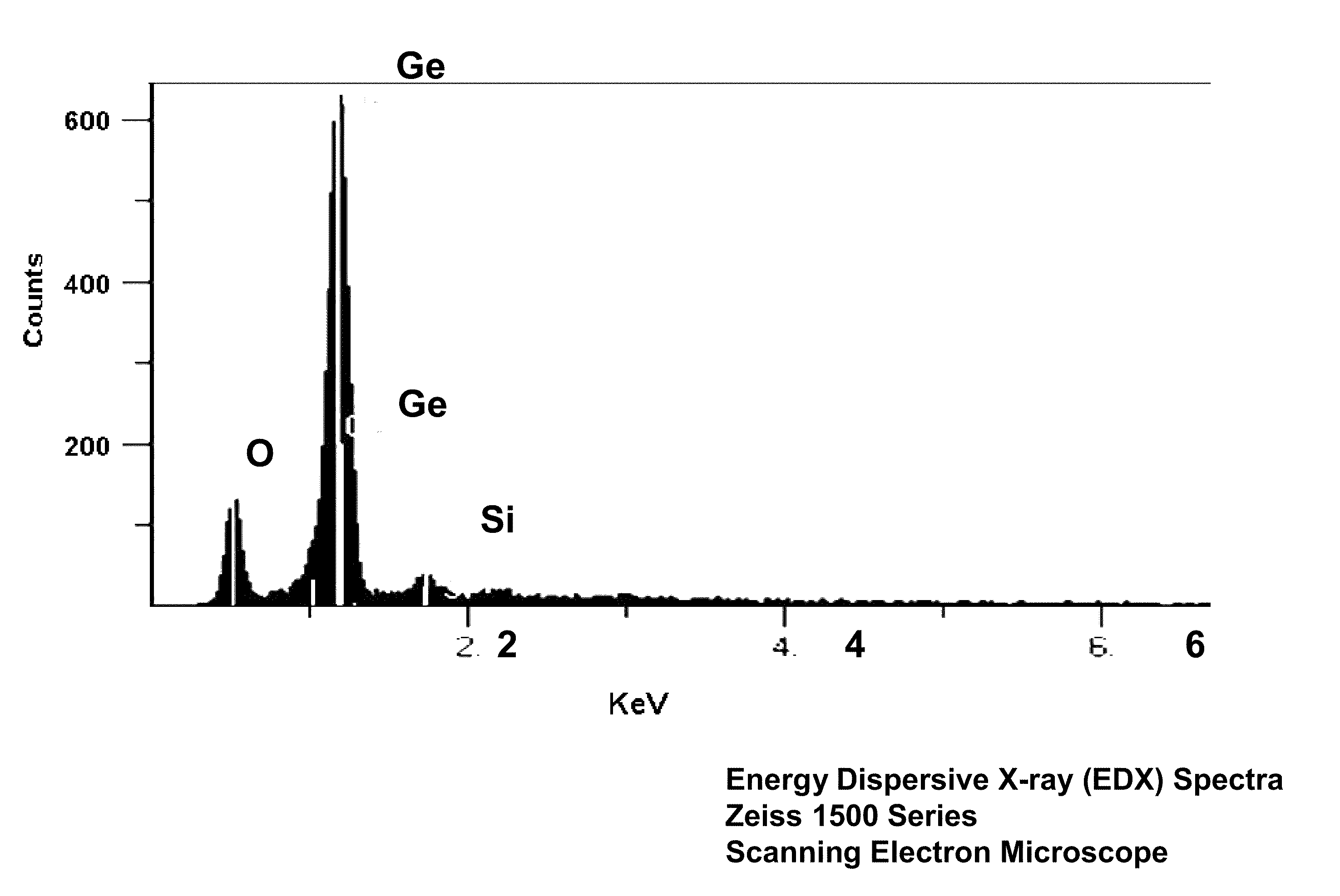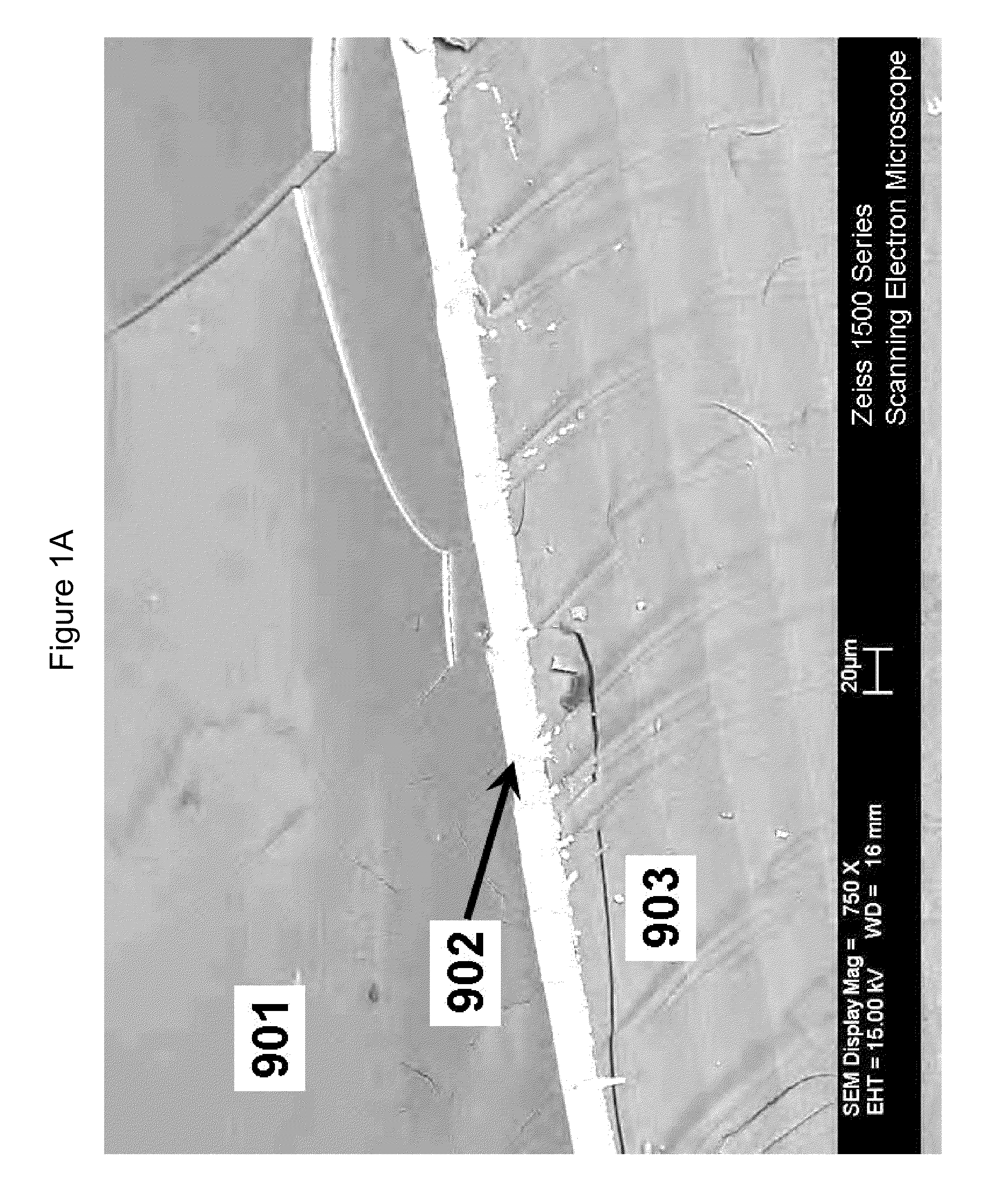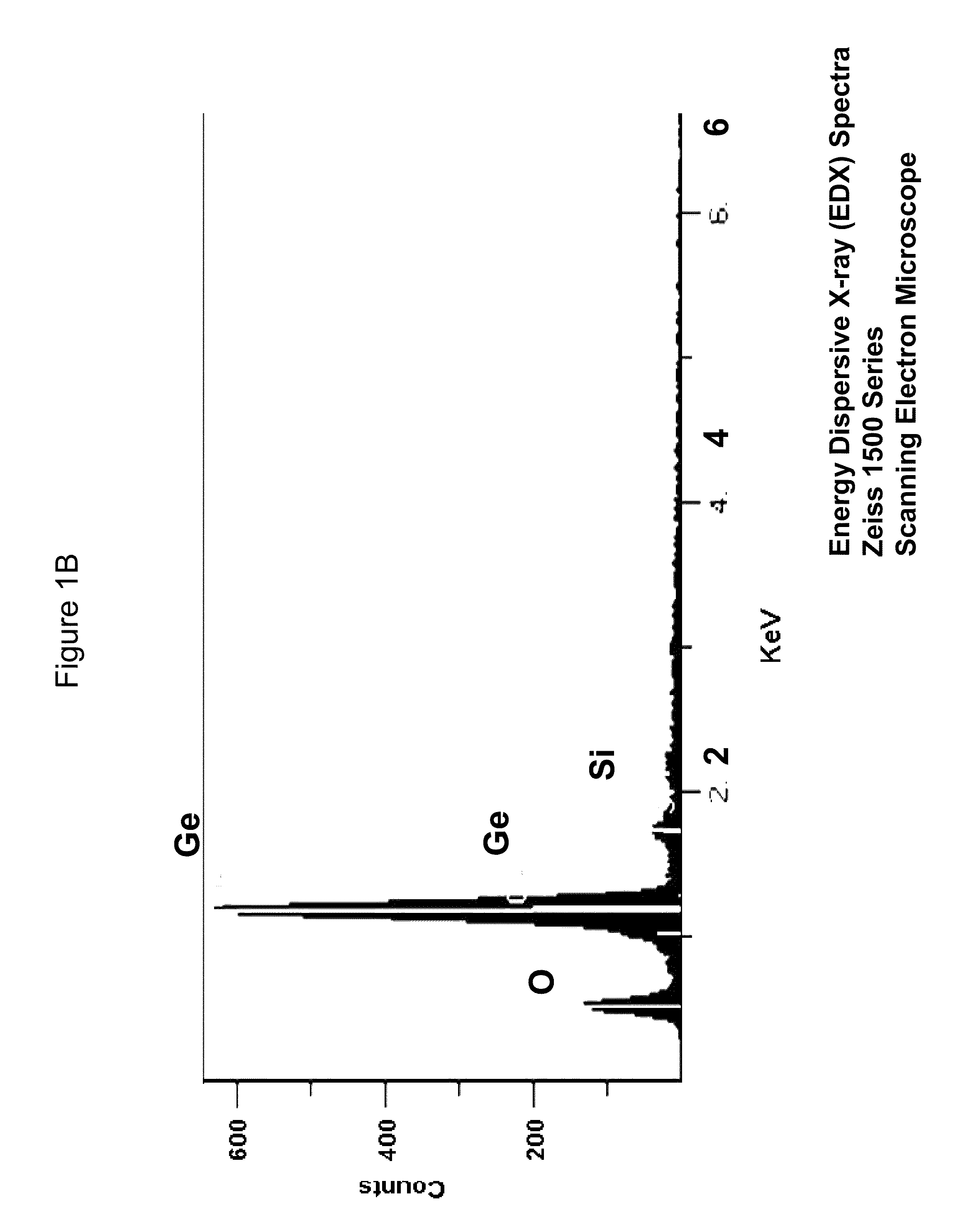Process for preparing an optical preform
a technology of optical preforms and optical fibers, applied in glass making apparatus, other domestic objects, manufacturing tools, etc., can solve the problems of attenuation of light through fibers, decrease in the distance light can be propagated without being amplified, and complex time-consuming process of manufacturing optical fibers used for communication
- Summary
- Abstract
- Description
- Claims
- Application Information
AI Technical Summary
Benefits of technology
Problems solved by technology
Method used
Image
Examples
example 1
Cleaning Step
[0058]A silica based, silica preform tube with a large amount of redeposited germanium and germanium oxides (i.e., GeOx) compounds inside the tube (See FIG. 4, left side) was cleaned by using a vapor-phase cleaning process. The vapor-phase cleaning gases comprised carbon monoxide, CO, and chlorine, Cl2, along with a carrier gas of helium. The cleaning gases were passed through the centerline opening 14 as well as around the outside of the preform tube by suspending the preform tube in a quartz-lined furnace for 1 hr at a temperature of 1125° C. Cleaning gas flows into the furnace in SLPM (standard liters per minute) was as follows: 5.0 / 0.50 / 5.0 SLPM of He / Cl2 (He containing 10% by volume CO), respectively, i.e., 4.8% CO and 4.8% Cl2 by volume in helium. The preform (i.e., preform tube) was allowed to cool to room temperature, examined, and showed a clean centerline hole and no evidence of the redeposited GeOx remaining after cleaning (FIG. 4, right hand side). It is als...
example 2
Cleaning Step
[0059]A second silica based, silica preform tube with a large amount of redeposited germanium and germanium oxides (i.e., GeOx) compounds inside the tube was cleaned by using a vapor-phase cleaning process. The vapor-phase cleaning gases comprised carbon monoxide, CO, and chlorine, Cl2 along with a carrier gas of helium. The cleaning gases were passed through the centerline opening 14 as well as around the outside of the tube by suspending the tube in a 6″ diameter quartz-lined furnace for 1 hr at a temperature of 1000° C. Cleaning gas flows into the furnace in SLPM (standard liters per minute) was as follows: 5.0 / 0.50 / 5.0 SLPM of He / Cl2 / (He containing 10% by volume CO), respectively, i.e., 4.8% CO and 4.8% Cl2 by volume in helium. The preform (i.e., preform tube) was allowed to cool to room temperature, examined, and showed a clean centerline hole and no evidence of the redeposited GeOx remaining after cleaning.
example 3
Etching and Cleaning Steps
[0060]A similar set of experiments were run on core preforms having a 2% delta (vs. silica), 36% by weight GeO2 and a parabolic shaped profile as follows. Approximately 7500 grams of GeO2—SiO2 soot having a density of about 0.5 grams / cc were OVD deposited on a 1 meter long by approximately 12 mm diameter removable ceramic rod (substrate rod) to produce the core soot preform. The substrate rod was then removed and the soot preform was placed in a quartz-lined furnace set at 1000° C. then dried in atmosphere comprising helium and approximately 1 volume % each of chlorine and oxygen gases. The soot preform was then sintered in an atmosphere comprising helium to a dense glass preform (with a centerline hole) by lowering it through a hot zone set at approximately 1400° C.-1450° C. The centerline of this preform was then vapor phase etched at this temperature by flowing SF6+O2+He (approximately 90, 100, 500 sccm, respectively) through the centerline hole of the p...
PUM
| Property | Measurement | Unit |
|---|---|---|
| Temperature | aaaaa | aaaaa |
| Temperature | aaaaa | aaaaa |
| Temperature | aaaaa | aaaaa |
Abstract
Description
Claims
Application Information
 Login to View More
Login to View More - R&D
- Intellectual Property
- Life Sciences
- Materials
- Tech Scout
- Unparalleled Data Quality
- Higher Quality Content
- 60% Fewer Hallucinations
Browse by: Latest US Patents, China's latest patents, Technical Efficacy Thesaurus, Application Domain, Technology Topic, Popular Technical Reports.
© 2025 PatSnap. All rights reserved.Legal|Privacy policy|Modern Slavery Act Transparency Statement|Sitemap|About US| Contact US: help@patsnap.com



